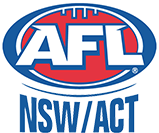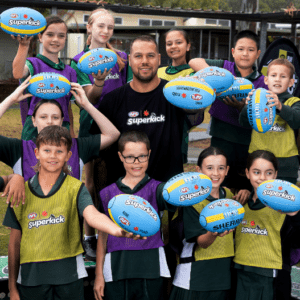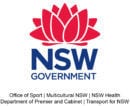Football community sets new participation record in 2024

Participation in Australian Rules Football has exceeded more than 528,000 in 2024, breaking the AFL’s all-time registered participation record of 526,000 set last year.
The 2024 total figure includes registered participants across community football (junior, youth and senior levels), AFL Nines, NAB AFL Auskick and the newly introduced, NAB AFL Superkick.
Excitingly the 2024 record figure will continue to climb, as registrations for NAB AFL Superkick, NAB AFL Auskick and AFL Nines ramps up for terms three and four heading into spring.
There has been growth across the country in registered participation, up four per cent nationally compared to this time last year.
Tasmania and the Northern Territory have seen the largest participation spikes of 13 and nine per cent respectively, with girls now making up more than 40 per cent of Auskickers in the NT and the number of junior footballers in Tassie’s local leagues boosted by nine per cent.
In Queensland numbers are up six per cent which comes off the back of consecutive record years, while New South Wales have held their 2023 numbers, to collectively boast a combined total of more than 120,000 participants. The Sunshine State has already hit more than 64,000 registered players and NSW more than 56,500, making up almost 25 per cent of the overall national total.
Traditional footy heartland in Victoria (222,000), Western Australia (84,500) and South Australia (63,800) continue to drive strong participation numbers across all levels of footy, while women and girls now account for 20 per cent of all community football registrations nationally.
NAB AFL Auskick continues to kick goals with children and families across the country – tracking seven per cent above 2023 figures – with the program on the cusp of breaking its own all-time registered participation record of 125,000 set last year.
6.5 per cent of all participants identify as Aboriginal and Torres Strait Islander, with the AFL’s participation programs recording an increase of 2.5 per cent, while there’s also been an increase of 3.8 per cent in AFL participation programs with players having a parent born overseas.
The growth across all states and territories comes off the back of multiple game development initiatives including:
- – More family-friendly session times for NAB AFL Auskick and NAB AFL Superkick
- – Twenty-five per cent of Tasmanian primary schools will host an after-school Auskick and or Superkick program in term three
- – More all-girls and wheelchair NAB AFL Auskick offerings
- – South Australia had more than 103 all-girls centres and are up 12 per cent in women and girls participation compared to this time last year
- – Queensland has seen a five per cent increase in participants with a disability
- – The introduction of AFLW Community Camps this year, in addition to AFL Community Camps, aided the focus on junior participation in the ACT
- – In New South Wales the Hurstville and Parramatta Village Models kicked off, with more than 500 children experiencing open trainings, facility visits and match-day offerings with the Sydney Swans and GIANTS facilitated by a teacher within each of the villages
- – WA implemented a standalone women’s competition for AFL Nines and doubled its participation rate throughout its Bachar Houli Programs for the State Boys Academy and Junior Girls Academy
.
Executive General Manager of Game Development, Rob Auld, said he was delighted so many people are connecting with Australian Rules Football and actively participating in the game.
“On behalf of the AFL I’d like to thank every single registered participant who has played Australian rules footy this year, we’re incredibly proud and humbled that more than half a million Australians are actively involved in footy and love our game,” Auld said.
“From traditional ways to play such as NAB AFL Auskick and community footy, to the introduction of NAB AFL Superkick and drive to expand AFL Nines, we want to ensure we’re providing the best experiences and opportunities so our game is open and accessible for everyone.
“It’s pleasing to see numbers remain strong and continue to grow in our footy heartland, especially in Victoria and South Australia, while in our key growth markets Queensland participation keeps rising year on year and NSW showing positive signs.
“This growth across the board is vital as we strive to have footy in every home and aim for one million participants by 2033, which is backed by the 10 per cent enshrined investment flowing into game development initiatives.
“We know there are challenges in local footy and there is still work that needs to be done to help clubs, but the AFL is committed to supporting grassroots football, we need a strong base to sustain the game for future generations.
“I’d like to thank all our state and territory teams, the local club representatives and all the parent volunteers who are on the ground and help deliver our programs – your passion and dedication make these milestone results possible.”
.






























